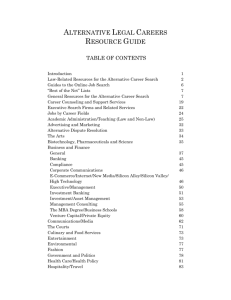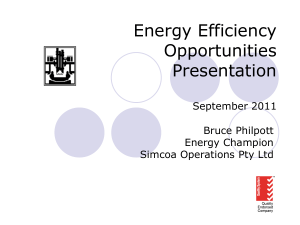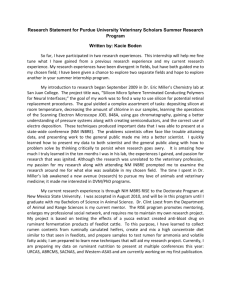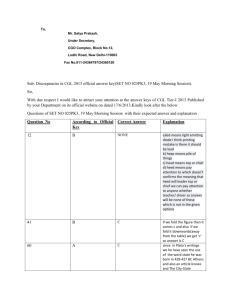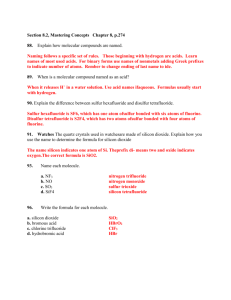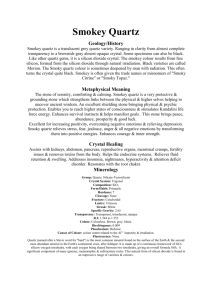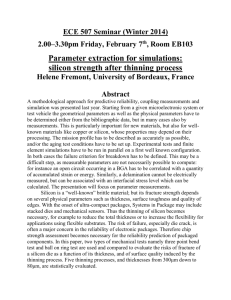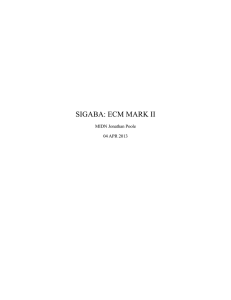S0287 Rev. - - Gravity Probe B
advertisement
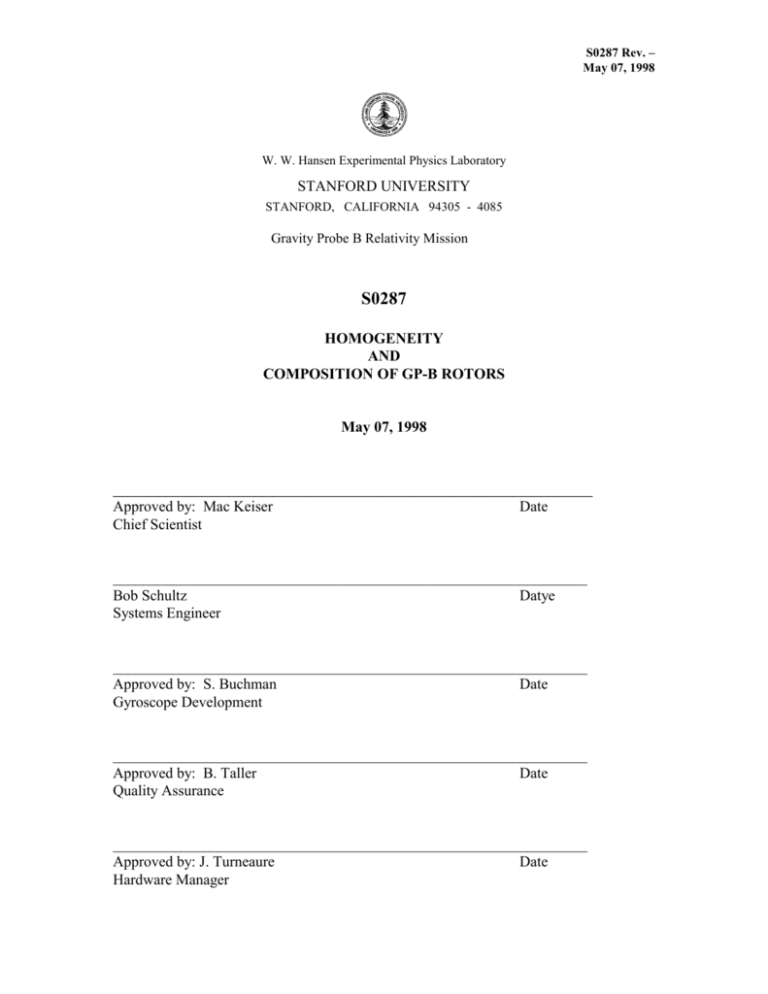
S0287 Rev. – May 07, 1998 W. W. Hansen Experimental Physics Laboratory STANFORD UNIVERSITY STANFORD, CALIFORNIA 94305 - 4085 Gravity Probe B Relativity Mission S0287 HOMOGENEITY AND COMPOSITION OF GP-B ROTORS May 07, 1998 ______________________________________________________ Approved by: Mac Keiser Chief Scientist Date _______________________________________________________________ Bob Schultz Datye Systems Engineer _______________________________________________________________ Approved by: S. Buchman Date Gyroscope Development _______________________________________________________________ Approved by: B. Taller Date Quality Assurance _______________________________________________________________ Approved by: J. Turneaure Date Hardware Manager S0287 Rev. – May 07, 1998 Homogeneity and Composition of GP-B Rotors S0287 G. M. Keiser Introduction and Requirements: The purpose of this document is to verify the requirements in the SIA Specification (Sec. 3.7 of PLSE-12) which are related to the homogeneity and composition of the Gravity Probe B gyroscope rotors. These requirements are 3.7.1.5.2.2.1.1.2 Homogeneity The density homogeneity d(rho)/rho across any diameter shall be less than or equal to 1.0e-5. and 3.7.1.5.2.2.1.1.1 Material The rotor substrate material shall be as specified in Section 1.2 of T003. The composition of the GP-B rotors, in turn, is specified in the following paragraph of the GP-B System Design and Performance specification (T003): 1.2 Composition The gyroscope rotor shall consist of a sphere made from homogeneous fused quartz (two rotors) or single-crystal silicon (two rotors), coated with a uniform layer of niobium or niobium compound. One rotor of each type shall have its spin axis oriented in the positive sense along the telescope axis, and one rotor of each type shall have its spin axis oriented in the negative sense. The rotor shall be enclosed in a gyroscope housing also made from fused quartz. Since additional information is needed to verify the requirements in this paragraph of T003, the purpose of this document is only to verify the requirements in the SIA specification. The homogeneity of the substrate material contributes to the mass unbalance and differences of moments of inertia of the gyroscope rotor. Requirements on these quantities are given in paragraphs 1.3.1 and 1.3.2 of T003. See document S0288, Rotor Mass Unbalance and Difference in Moments of Inertia, for verification these requirements. Fused Quartz Rotors, Composition The fused quartz rotor were made from homosil cubes, 5 cm. on a side, produced by Heraeus Amersil. The cubes were selected to have a higher density homogeneity. Fused Quartz Rotors, Homogeneity The initial estimate(Everitt, Fairbank et al. 1980) of the Gravity Probe B requirements on the density homogeneity of the fused quartz rotors was that the fractional difference in the density, /, had to be less than 3 10-7. For this reason, considerable effort by a group led by M. Player at the University of Aberdeen (De Freitas and Player 1995) was devoted to variations in the density homogeneity to an accuracy of 1 10-7. S0287 Rev. – May 07, 1998 When subsequent analysis of the effect of density homogeneity showed that the requirements could be considerably relaxed to / < 1 10-5 , it was found that the requirement on the density could be verified from optical interferograms supplied by the manufacturer. However, the density homogeneity of several quartz cubes was determined both by the group at Aberdeen and from the optical interferograms supplied by the manufacturer. These results agreed with one another to within 20%. Measurements (De Freitas and Player 1995) of the change in the refractive index, n, and the fractional changes in the mass density / show that the relationship is given by 2..27n The manufacturer's (Heraeus Amersil) specification of n < 0.8 10-6 for selected fused quartz cubes would give / < 1.84 10-6. The variation in the density homogeneity across each of three perpendicular faces may be measured by optical interferogram. These measurements were made by Heraeus Amersil and are summarized in the table below: Rotor 95FH1 95FH2 95FH3 95FH4 95FH5 95FH6 95FH7 95FH8 95FH9 96FH10 96FH11 96FH12 96FH13 96FH14 96FH15 96FH16 96FH17 96FH18 n max. 1.10E-06 1.70E-06 9.60E-07 1.00E-06 1.50E-06 1.30E-06 1.20E-06 1.10E-06 1.20E-06 1.20E-06 1.30E-06 1.70E-06 1.70E-06 1.50E-06 1.30E-06 1.50E-06 1.40E-06 1.60E-06 max 2.53E-06 3.91E-06 2.21E-06 2.30E-06 3.45E-06 2.99E-06 2.76E-06 2.53E-06 2.76E-06 2.76E-06 2.99E-06 3.91E-06 3.91E-06 3.45E-06 2.99E-06 3.45E-06 3.22E-06 3.68E-06 Silicon Rotors, Composition The silicon rotors were made from 2 inch diameter ingots of float zone refined single crystal silicon manufactured by Wacker. The first lot of silicon was first ordered on July 1, 1991, and had a resistivity greater than 50 ohm-cm. Material from this first lot was used to make rotors 93S17, 95S24, 95S25, 95S26, and 95S27. The second lot of silicon was ordered on June 2, 1995, and had a resistivity greater than 2000 ohm-cm. Material from this lot was used to make rotors 96S29, 96S30, and 97S31. S0287 Rev. – May 07, 1998 Homogeneity, Silicon An international effort to determine Avagadro's number in recent years (Basile, Garfagnini et al. 1994) has been the impetus for careful measurement of the density of single crystal silicon. The density of single crystal silicon is = 2.32904 g/cm3 in vacuum at 22.50C (De Bievre, Valkiers et al. 1997). Measurement of the density of various silicon density standards has shown that the maximum difference between samples is =1.6 10-5 g/cm3 (De Bievre, Valkiers et al. 1997), which gives a relative difference in the density of / = 0.7 10-5 from one silicon sample to another. The fractional contribution of oxygen and carbon impurities to the density of silicon crystals is typically 1 10-7 (Fujii, Tanaka et al. 1995),(De Bievre, Valkiers et al. 1997). Fractional contributions to the density from other impurities with a relative abundance of several parts per billion is expected to be on the order of 1 10-8. The reasons for the density difference between different samples is not well understood(De Bievre, Valkiers et al. 1997). Comparison of the density of two silicon spheres which were made from the same ingot showed that difference in density is considerable smaller . The measured relative difference in density(Fujii, Tanaka et al. 1995) of the two spheres was (0.86 1.5) 10-7. For these reasons the relative variation in density of the silicon material is conservatively estimated to be less than 1 10-6. References: Basile, G., R. Garfagnini, et al. (1994). “Foreward, International Workshop on the Avogadro Constant.” Metrologia 31(3): 155. De Bievre, P., S. Valkiers, et al. (1997). “The molar volume of silicon [Avogadro constant].” IEEE Trans. Instrum. Meas. (USA), IEEE Transactions on Instrumentation and Measurement 46(2): 592-5. De Freitas, J. M. and M. A. Player (1995). “Ultrahigh precision measurements of optical heterogeneity of high quality fused silica.” Applied Physics Letters 66(26): 35524. Everitt, C. W. F., W. M. Fairbank, et al. (1980). Report on a Program to Develop a Gyro Test of General Relativity in a Satellite and Associated Control Technology, Stanford University. Fujii, K., M. Tanaka, et al. (1995). “Absolute measurement of the density of silicon crystals in vacuo for a determination of the Avogadro constant.” IEEE Trans. Instrum. Meas. (USA), IEEE Transactions on Instrumentation and Measurement 44(2): 542-5.

